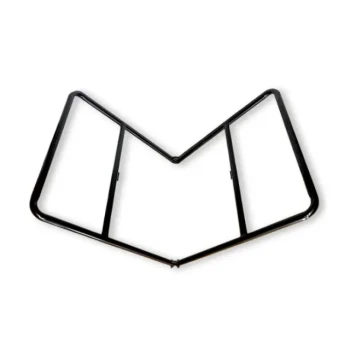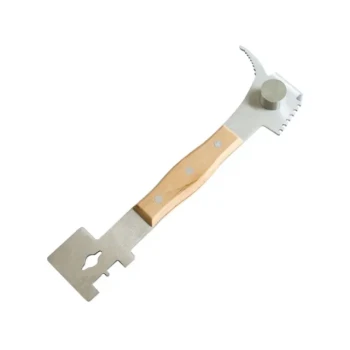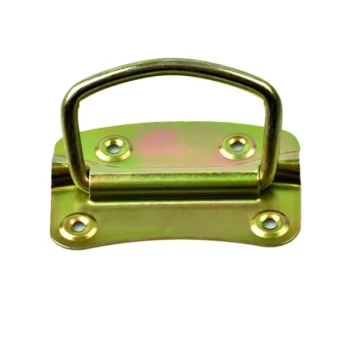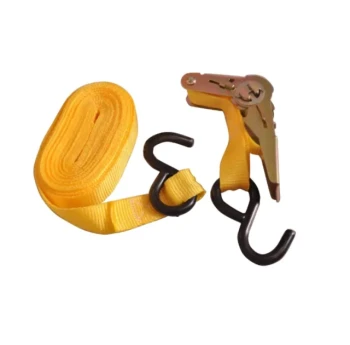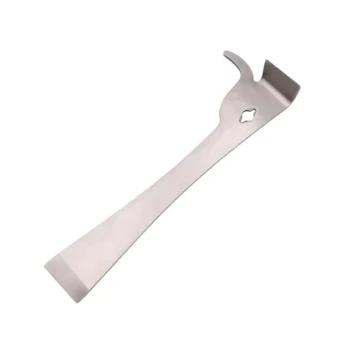At its core, the fundamental difference between these two systems lies in their orientation and management philosophy. The Dadant hive is a vertical, stackable hive system composed of separate boxes for the brood nest and honey stores, while the Layens hive is a horizontal, single-box "long hive" where brood and honey are managed side-by-side. This core difference dictates everything from physical effort to overwintering strategy.
The choice between a Dadant and a Layens hive is not just about equipment; it's a choice between two distinct approaches to beekeeping. The Dadant is built for maximizing honey yield through vertical expansion, while the Layens is designed for minimal heavy lifting and a more natural, low-intervention colony management style.
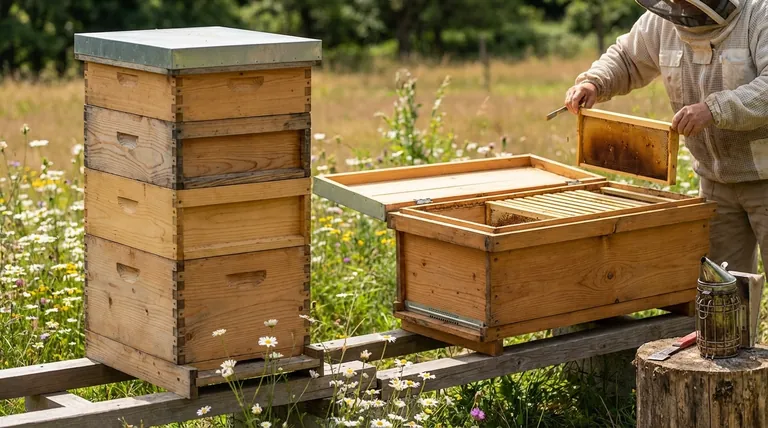
Core Design Philosophy: Vertical vs. Horizontal
The most significant distinction is how the hive expands. One grows up, and the other grows out. This dictates the entire workflow for the beekeeper.
The Dadant Hive: Vertical Expansion
The Dadant hive, developed by Charles Dadant, is a vertical system similar in concept to the more common Langstroth hive. It consists of stackable boxes, or "supers."
A deep box at the bottom serves as the brood chamber, providing the queen with a large, dedicated area for laying eggs.
As the colony grows and needs space for honey, the beekeeper adds shallower boxes, known as honey supers, on top. Management and harvesting involve lifting and manipulating these heavy boxes.
The Layens Hive: Horizontal Management
The Layens hive, designed by Georges de Layens, is a horizontal system often called a "long hive" or "trough hive." All the frames exist within one single, long box.
The colony begins at one end of the hive. As it expands, the beekeeper adds new frames next to the existing ones, encouraging the colony to grow horizontally.
Brood is typically found in the center frames, with honey and pollen stored on the outer frames. This mimics the structure of a bee colony in a hollow log.
A Tale of Two Frames: Dimensions and Impact
While both hives use frames, their dimensions reflect their underlying philosophies.
The Dadant Frame: Wide and Productive
The Dadant brood frame is significantly larger than a standard Langstroth frame, specifically in its depth.
The goal was to create an uninterrupted brood nest for a prolific queen, reducing the chance she would cross a "honey barrier" between two separate brood boxes. This design is highly favored for maximizing population and, consequently, honey production.
The Layens Frame: Exceptionally Tall and Deep
The Layens frame is one of the largest frames used in beekeeping, being nearly square and exceptionally deep.
This depth is crucial to its design philosophy. It mimics the shape of a natural bee nest in a tree cavity, allowing the winter cluster to move vertically up the comb as it consumes honey stores. This natural movement pattern is a key reason for the Layens hive's renowned overwintering success.
Understanding the Trade-offs
Neither system is inherently superior; they are optimized for different goals and present unique challenges.
Physical Effort
The Dadant system requires significant heavy lifting. A full honey super can weigh 50-60 lbs (22-27 kg) or more, and inspecting the brood chamber requires lifting all the honey supers off first.
The Layens system eliminates all heavy box lifting. The beekeeper only ever lifts one frame at a time, which is much easier on the back and makes it highly accessible for people with physical limitations.
Honey Production and Harvesting
Dadant hives are powerhouses for large-scale honey production. Harvesting is efficient because the beekeeper removes entire boxes (supers) filled only with honey.
Layens hives can produce substantial amounts of honey, but harvesting is done frame by frame. This can be more time-consuming for a large operation but is perfectly suitable for a hobbyist.
Overwintering Strategy
Layens hives are famous for their excellent overwintering capabilities. The deep frames ensure the bee cluster can stay in contact with its food stores throughout the winter without assistance.
Dadant hives also overwinter well due to their large brood nest volume, but the beekeeper must be more diligent in ensuring adequate honey stores are positioned correctly above the cluster.
Equipment Availability
In Europe, Dadant equipment is common and widely available. In North America, it is less common than Langstroth equipment but can still be found.
Layens equipment is a niche product worldwide. Beekeepers often must build their own hives from plans or find a specialty supplier, making it harder to get started.
Making the Right Choice for Your Beekeeping Goal
Your personal goals, physical ability, and beekeeping philosophy should guide your decision.
- If your primary focus is commercial-scale honey production: The Dadant hive's efficiency in vertical expansion and super-based harvesting makes it the more logical choice.
- If your primary focus is minimal heavy lifting and natural beekeeping: The Layens hive's single-box, frame-by-frame management and superior overwintering design are unmatched.
- If your primary focus is ease of access to resources and community support (especially in North America): Consider that the Langstroth hive, while not part of this comparison, remains the dominant standard with the most widely available equipment and educational material.
Ultimately, the best hive is the one that aligns with your body, your goals, and the way you want to interact with your bees.
Summary Table:
| Feature | Dadant Hive | Layens Hive |
|---|---|---|
| Core Design | Vertical, stackable boxes | Horizontal, single long box |
| Management Style | High-intervention, honey-focused | Low-intervention, natural beekeeping |
| Physical Effort | Heavy lifting of full supers | Minimal; lift one frame at a time |
| Honey Harvesting | Efficient removal of entire supers | Frame-by-frame extraction |
| Overwintering | Good, requires careful food placement | Excellent, deep frames support natural cluster movement |
| Ideal For | Maximizing commercial honey yields | Hobbyists, sustainable practices, accessibility |
Ready to Build Your Ideal Apiary?
Whether you're a commercial apiary focused on maximizing honey production with a Dadant-style system or a distributor seeking the unique advantages of Layens hives for your customers, HONESTBEE has the supplies and expertise to support your operation.
We supply durable, high-quality beekeeping equipment and frames tailored for both systems through our wholesale-focused operations. Let us help you choose the right tools for your beekeeping philosophy and goals.
Contact HONESTBEE today to discuss your specific needs and place your wholesale order!
Visual Guide
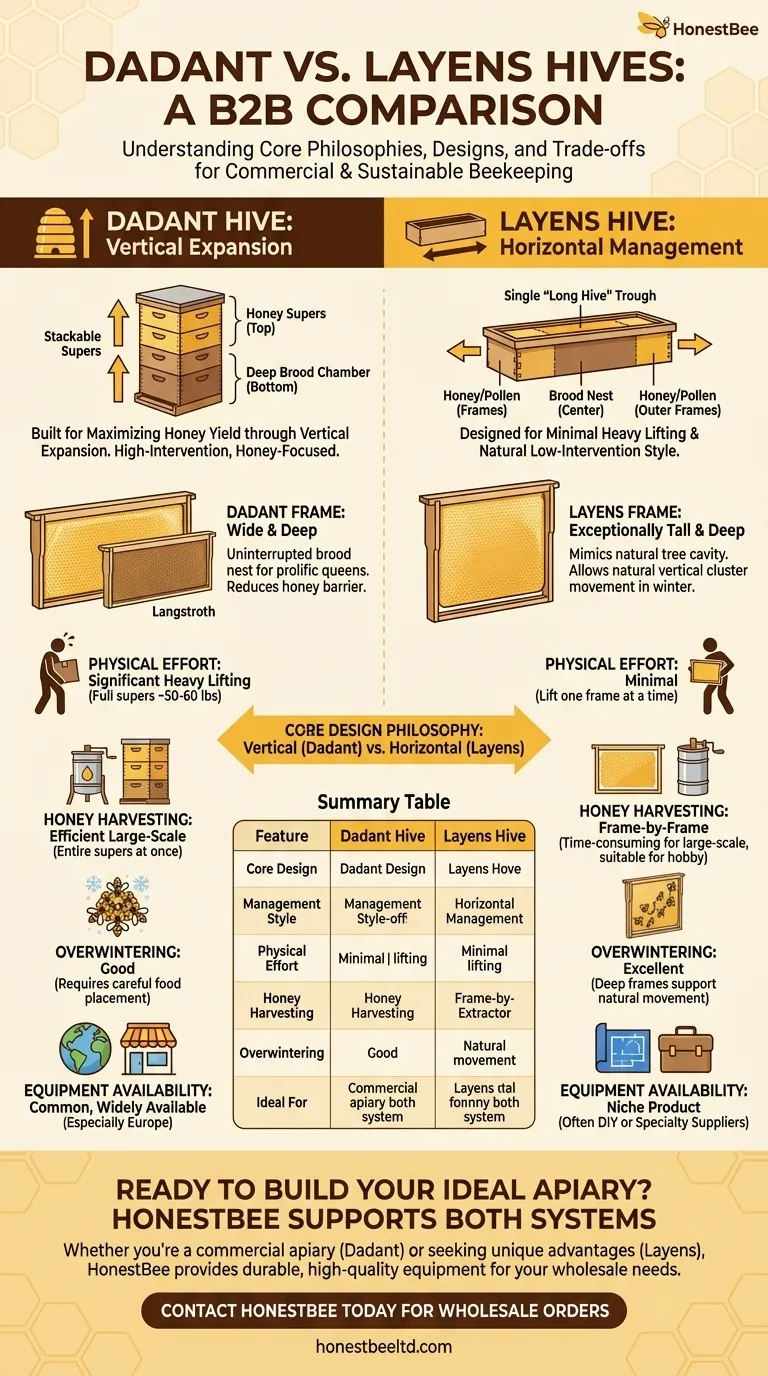
Related Products
- Ergonomic Two Person Foldable Hive Lifter
- Long Langstroth Style Horizontal Top Bar Hive for Wholesale
- Multi-Functional Sliding Hive Entrance for Beekeeping
- Wholesales Dadant Size Wooden Bee Hives for Beekeeping
- Plastic Bee Hive Stand for Beekeeping
People Also Ask
- When not to open a beehive? Protect Your Hive's Health by Avoiding These Critical Mistakes
- What is the spur hive tool used for? The Essential Multi-Tool for Every Beekeeper
- What is a beekeeper tool? The Essential Hive Management Lever for Apiaries
- How do you lift a beehive? A Guide to Safe & Efficient Hive Relocation
- How should frames be reassembled within the box to avoid squashing bees? Master a Gentle, Bee-Safe Technique
